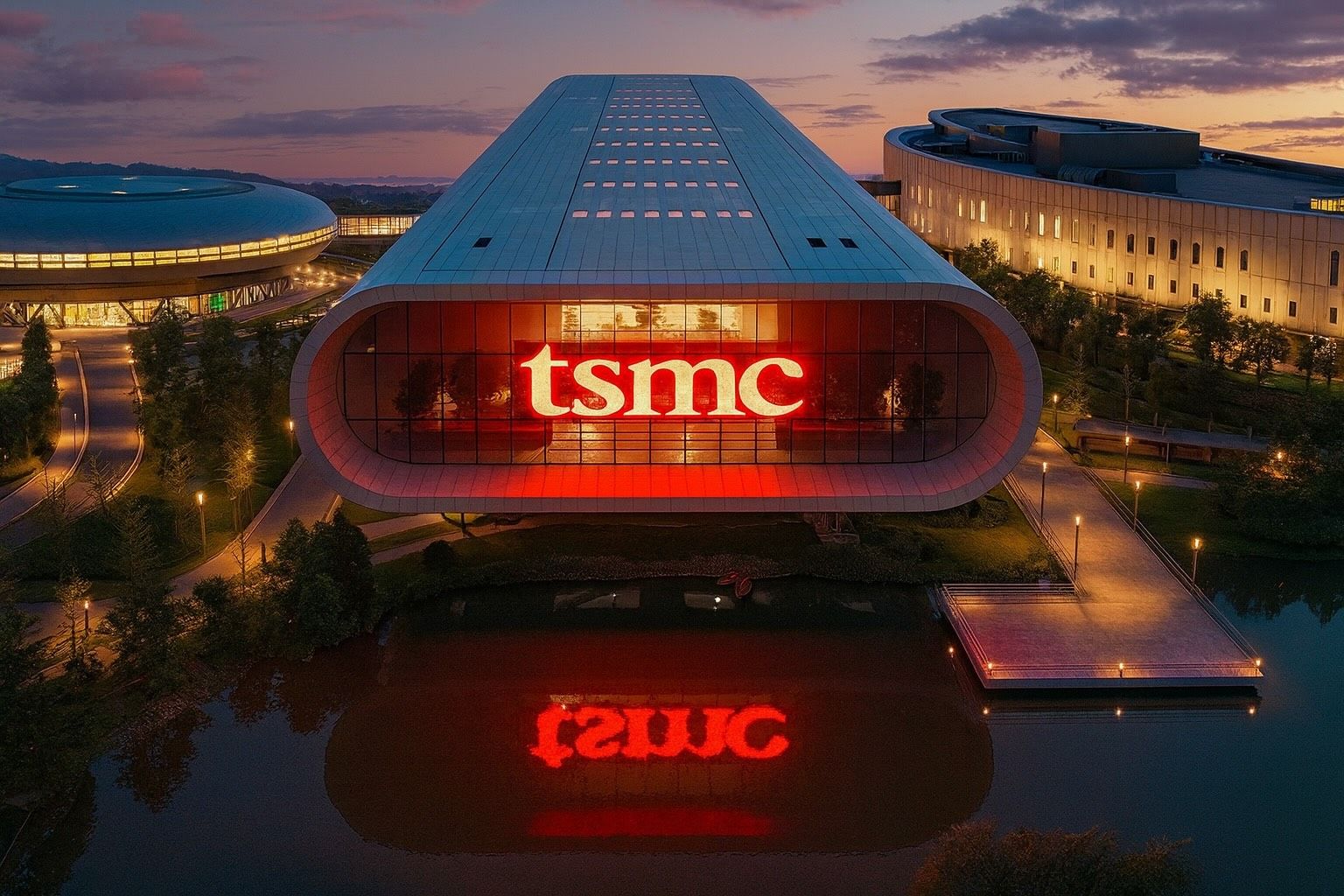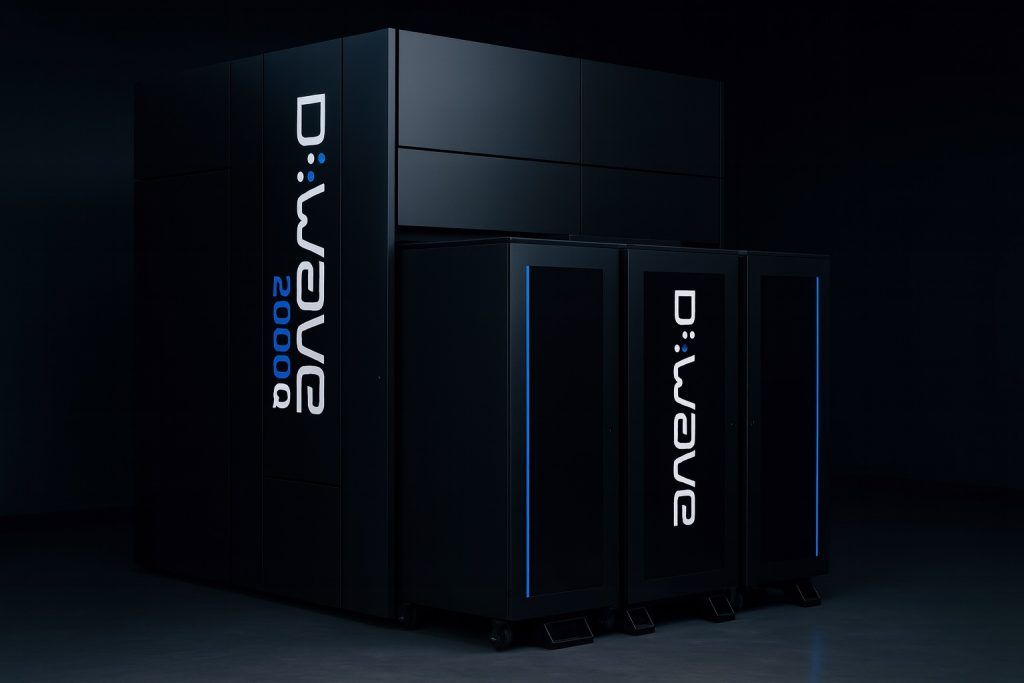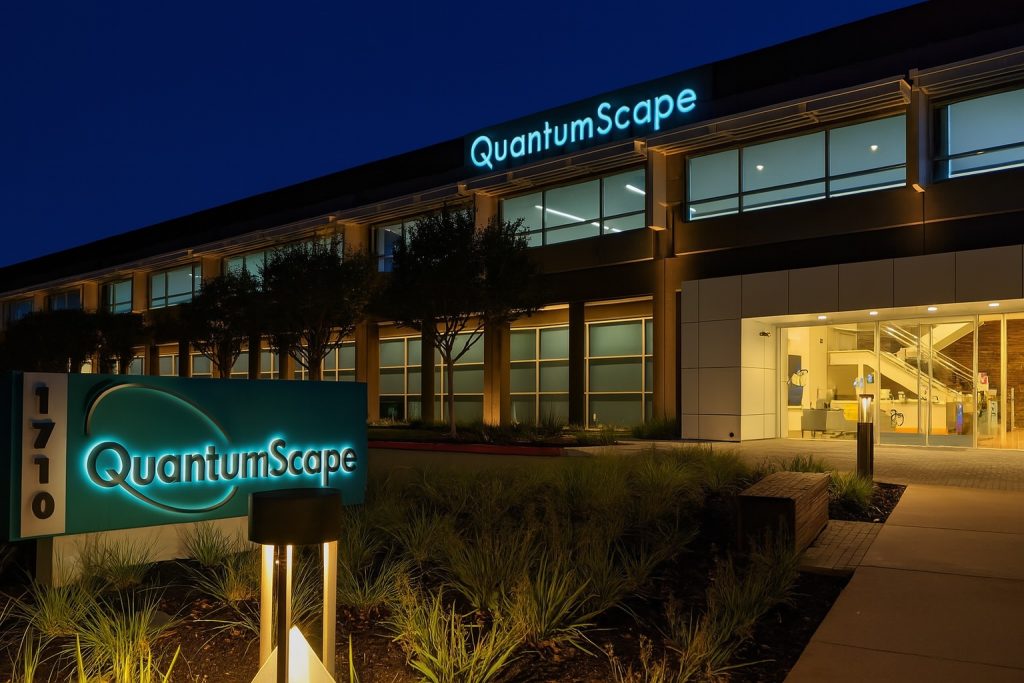- Stock surge: TSMC’s shares have rallied sharply in 2025 on booming AI demand. Taipei-listed stock hit an intraday record NT$1,370 (≈$296 ADR) in early October [1]. U.S. ADRs briefly topped $300, up roughly 45% year-to-date (about +63% in 12 months) [2].
- Strong results: Q3 2025 revenue is preliminarily reported at NT$989.9 billion ($32.5 billion), up ~30% year-over-year and beating analysts’ forecasts [3] [4]. Q2 2025 sales rose 44% YOY to $30.1 billion [5]. Management guides full-year growth around +30% [6], with consensus expecting continued 25–30% growth.
- AI chip demand: Major customers (Nvidia, AMD, Apple, Qualcomm, etc.) are placing multibillion-dollar orders for TSMC’s advanced AI accelerators. IDC analyst Mario Morales says “TSMC will continue to outperform its peers given the ongoing exponential growth of AI infrastructure investments” [7]. Cutting-edge nodes like 3nm/2nm command over 90% foundry market share [8], and MediaTek plans to tape out a 2nm chip at TSMC in Sept 2025 [9].
- Tech roadmap: TSMC remains technology leader, targeting high-volume production of 2 nm chips by late 2025 [10] and an even smaller “1.4 nm” node by 2028 [11]. These next-gen chips promise ~25–30% lower power use vs. 3nm [12], easing the AI data-center power crunch. TSMC also sells mature nodes (28–16 nm) for automotive and IoT chips, and it runs specialized processes for RF, power semiconductors and packaging.
- Global expansion: TSMC is investing hundreds of billions abroad. Its Arizona “GIGAFAB” campus now has three fabs in various stages: Fab 1 (4nm) started production in H1’25, Fab 2 (3nm + first 2nm tech) is completing construction for a 2028 ramp, and Fab 3 (2nm/next-gen) is planned by decade-end [13]. Total U.S. capex in Arizona exceeds ~$65B (with up to $6.6B CHIPS Act aid) [14] [15]. In Japan, TSMC’s first $7B Kumamoto fab opened in 2024 and a second is due ~2027 (total >$20B investment) [16] [17]. In Europe, a €10.3B Dresden fab (joint venture ESMC with Infineon/NXP/Bosch) is under construction (target 2027, making 40k wafers/month at 28–12nm) [18], plus a Munich design center (opening Q3’25) to help carmakers and AI firms [19].
- Geopolitical context: TSMC sits at the center of U.S.-China tech rivalry. Taiwan firmly rejected a U.S. proposal to split chip production 50/50, with officials insisting “most production will remain in Taiwan” [20] [21]. Washington has also tightened export rules: U.S. revoked TSMC’s fast-track status for equipment to its China fab (Nanjing) [22] [23], though that plant makes only mature-node chips (16nm, ~2.4% of sales). Meanwhile Beijing has tightened rare-earth export controls [24] and is conducting military drills near Taiwan [25], underscoring regional supply-chain risks.
- Analyst outlook: Wall Street and Asia brokers are overwhelmingly bullish. Price targets are rising (Barclays, Huatai ~NT$8,300–8,500 i.e. ~$300+ per ADR [26]). Susquehanna and others note TSMC’s premium in AI chip fabrication. Yet valuations (~30× forward P/E) already reflect much of this growth [27]. Key catalysts include Q3 results (reported Oct 16, 2025) and any updates on 2nm ramp.
Breaking out: Taiwan’s TSMC has ridden a wave of AI demand to record results. The company’s stock and revenues are surging as it churns out advanced chips for customers like Nvidia and Apple [28] [29]. Q3 sales (~$32.5B) beat estimates, and management expects ~30% growth for all of 2025 [30]. “We have fully booked production lines in the U.S. for the next three years,” CEO C.C. Wei told reporters, even as he vowed to keep investing heavily at home (“continue to build [fabs] in Taiwan because it is still not enough” [31]). Industry analysts note TSMC’s unique position: IDC’s Mario Morales says “TSMC will continue to outperform… given the ongoing exponential growth of AI infrastructure investments.” [32] That AI-driven tailwind is pushing TSMC’s share price to new heights (Asia’s biggest tech stock) and underpinning record-high valuations [33] [34].
Technological Edge: From 2nm to Auto Chips
TSMC remains the clear leader in cutting-edge process technology. It already dominates 3nm production and is gearing up for its 2nm (N2) node, which is slated to enter high-volume production by late 2025 [35]. (MediaTek says it will tape out a 2nm SoC in Sept 2025 [36], and Apple and AMD are said to be lining up for N2 designs.) These next-gen chips use ~25% less power than the prior node [37], crucial for energy-hungry AI data centers. TSMC also has R&D silicon on its roadmap for 1.4nm by 2028 [38]. On its recent earnings call, management confirmed the 2nm ramp-up is proceeding on schedule, with “mass production of 2nm scheduled for Q4 of 2025.” Financial models project profit margins above 55% thanks to these premium nodes [39].
Beyond AI accelerators, TSMC invests in specialized technologies. It is a top supplier of Apple’s M-series mobile processors and Nvidia’s GPUs, and it caters to automotive and industrial chips. For example, TSMC is building a new design center in Munich focused on automotive, industrial, AI and IoT chips [40]. Its Dresden fab (ESMC) is being built mainly for mature-but-specialty nodes (28nm, 22nm, 16/12nm) that auto-makers and sensor companies need [41]. In all, TSMC claims over 90% share of the global 3nm/2nm foundry market [42], keeping it ahead of rivals (Samsung, Intel). As Jensen Huang of NVIDIA put it, “TSMC is at the leading edge of advanced semiconductor technology,” and its expansion promises “incredible things” as U.S. partners bring their work to Arizona [43]. (NVIDIA credits TSMC’s fabs as a key enabler of the AI revolution.)
Global Expansion: U.S., Japan, Europe
TSMC is aggressively expanding its factory footprint worldwide to diversify and satisfy customers. In the U.S., its Arizona site has grown into a “GIGAFAB” cluster. The first fab (using 4nm “N4”) started volume production in 2024; the second fab (3nm plus the first 2nm line) will begin producing leading-edge chips by 2028; and a third fab (for 2nm and beyond) is planned, lifting total U.S. investment to ~$65B [44]. The CHIPS Act gives up to $6.6B for these fabs [45]. Importantly, TSMC executives stress these U.S. plants complement but do not replace Taiwan capacity: the company will build 11 more production lines in Taiwan even as it adds three in the U.S. [46]. “Bringing more production to U.S. soil would solve a major supply-chain risk,” noted Reuters, given TSMC’s role supplying Apple, Nvidia, Qualcomm and others [47].
In Asia, TSMC’s Japan venture (Japan Advanced Semiconductor Manufacturing, JASM) is also expanding. The first Kumamoto plant opened in Q4 2024 (70,000 wafers/month) and a second $10B+ fab will break ground soon, raising the Japan investment to over $20B [48] [49]. Partners Sony, Denso and Toyota have equity stakes in JASM alongside TSMC, supporting chips for cars and consumer devices [50].
Global footprint: A TSMC fab under construction in Taiwan (2025). Besides Arizona and Kumamoto, TSMC is forging new ventures in Europe. In Dresden it is co-building a fab (ESMC) with Infineon, NXP and Bosch, aimed at 28/22/16nm nodes for autos [51]. And in Munich it is opening a chip design center (Q3 2025) to help European automakers and tech firms develop AI and high-performance chips [52]. These moves align with government incentives: the EU has approved state aid for the German project, and Japan secured TSMC’s commitment with heavy subsidies.
Geopolitical Challenges and Supply-Chain Security
As TSMC globalizes, it is caught in U.S.-China tech competition. In Taiwan, officials repeatedly assert that the island will not yield its chip crown. Taipei’s trade negotiator stated bluntly that Taiwan “will not agree” to any U.S. plan to make chips 50/50 between Taiwan and America [53]. Similarly, Taiwan’s vice-premier warned that her team “never made any commitment” to split production 50-50 [54]. Instead, Taiwan aims to remain “rooted in Taiwan and deploy around the world” via collaboration, not relocation [55].
Meanwhile Washington has stepped up export controls. In September 2025 the U.S. revoked TSMC’s validated end-user status for equipment going to its Nanjing plant in China [56]. (That plant makes only older chips, and analysts say the impact on TSMC’s business is minimal [57].) The U.S. also targets China with broader bans: Congress is considering further limits on chip gear exports as Beijing tightens its grip on rare-earths and control of semiconductor supply chains [58]. China’s recent rules require foreign firms using Chinese materials for semiconductors to get special licenses [59], mirroring U.S. moves. Separately, Taiwan’s defense report notes China’s frequent military drills and “grey zone” actions around the island [60], underscoring the strategic sensitivities. For TSMC, “ground zero” is a word often used by analysts to describe how Taiwan’s security affects tech supply chains.
Expert Commentary and Outlook
Industry leaders are bullish on TSMC’s prospects. AMD’s CEO Lisa Su praised TSMC’s “long track record of providing the leading-edge manufacturing capabilities” and reaffirmed her “commitment to our partnership” as they prepare for next-gen chips [61]. NVIDIA’s Jensen Huang similarly lauded TSMC’s expansion in Arizona, saying “when [TSMC’s] expertise is paired with the ingenuity of American workers, incredible things are possible” [62]. On the financial side, brokerage upgrades have followed. Barclays and Huatai recently raised price targets (to roughly $10,000 NT, or ~$325 ADR) citing TSMC’s AI leadership [63].
That said, TSMC’s valuations already reflect much optimism [64]. Some analysts caution that any hiccup in the AI boom or geopolitical skirmish could temper momentum. “TSMC is the most important [chip supplier] that U.S. companies depend on,” notes one semiconductor consultant, so any supply-chain disruption is a global worry. For now, though, TSMC’s story is clear: robust Q3 results and record-setting stock prices point to a company riding the AI-driven surge, even as it balances growth opportunities across Taiwan and the world [65] [66].
Sources: Financial and tech media reports and company releases, including Reuters [67] [68] [69], Bloomberg [70], industry analyses [71] [72], and TSMC statements [73] [74]. All facts are up-to-date as of mid-October 2025.
References
1. ts2.tech, 2. ts2.tech, 3. www.reuters.com, 4. www.bloomberg.com, 5. ts2.tech, 6. ts2.tech, 7. www.reuters.com, 8. ts2.tech, 9. www.reuters.com, 10. pr.tsmc.com, 11. ts2.tech, 12. www.nasdaq.com, 13. pr.tsmc.com, 14. pr.tsmc.com, 15. pr.tsmc.com, 16. www.reuters.com, 17. www.reuters.com, 18. www.datacenterdynamics.com, 19. www.reuters.com, 20. www.reuters.com, 21. www.reuters.com, 22. www.reuters.com, 23. www.reuters.com, 24. www.reuters.com, 25. www.reuters.com, 26. ts2.tech, 27. ts2.tech, 28. www.bloomberg.com, 29. www.reuters.com, 30. ts2.tech, 31. www.reuters.com, 32. www.reuters.com, 33. ts2.tech, 34. www.bloomberg.com, 35. pr.tsmc.com, 36. www.reuters.com, 37. www.nasdaq.com, 38. ts2.tech, 39. ts2.tech, 40. www.reuters.com, 41. www.datacenterdynamics.com, 42. ts2.tech, 43. pr.tsmc.com, 44. pr.tsmc.com, 45. pr.tsmc.com, 46. www.reuters.com, 47. www.reuters.com, 48. www.reuters.com, 49. www.reuters.com, 50. www.reuters.com, 51. www.datacenterdynamics.com, 52. www.reuters.com, 53. www.reuters.com, 54. www.reuters.com, 55. www.reuters.com, 56. www.reuters.com, 57. www.reuters.com, 58. www.reuters.com, 59. www.reuters.com, 60. www.reuters.com, 61. pr.tsmc.com, 62. pr.tsmc.com, 63. ts2.tech, 64. ts2.tech, 65. www.reuters.com, 66. ts2.tech, 67. www.reuters.com, 68. www.reuters.com, 69. www.reuters.com, 70. www.bloomberg.com, 71. www.reuters.com, 72. ts2.tech, 73. pr.tsmc.com, 74. pr.tsmc.com







